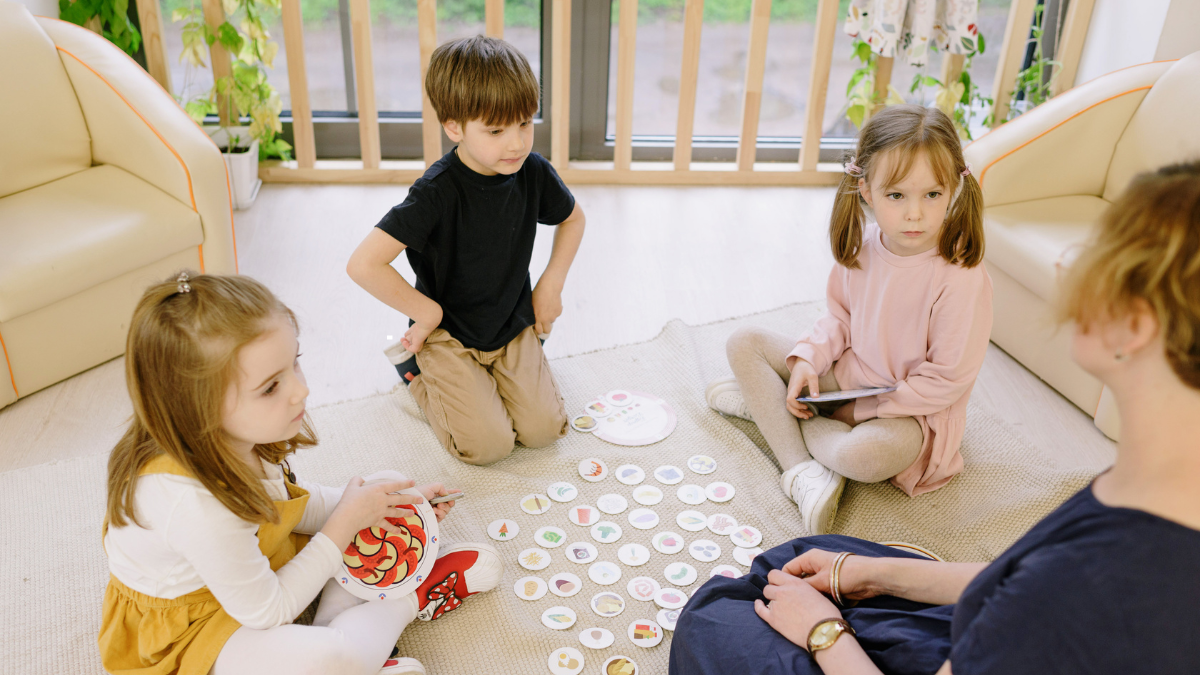Ensuring the safety of your children is one of the most important roles of every parent, guardian, or caregiver. As soon as they begin to crawl, walk, and explore the world around them, your child’s goal is to discover new things.
While their inquisitive nature is critical for healthy growth and development, it also means that they may potentially get into situations that could be unsafe or cause harm to themselves or the people around them.
That’s why teaching your children safety rules is one of the best ways to help them navigate the world both inside and outside your home.
Children of all ages require age-appropriate guidance to help them make better decisions, prevent dangerous situations, and recognize potential hazards before they are put at risk.
This can be anything from learning how to cross the street to understanding why it’s important to wear a helmet to knowing what to do in the event of an emergency.
These essential safety rules will serve as a foundation for your child to build upon as they get older, helping them remain safe in all situations.

6 General Safety Rules You Should Teach Your Children
1. Look Both Ways Before Crossing the Street
One of the first essential safety rules every child must learn is how to cross the street properly. As young children may not have a complete understanding of traffic rules or the speeds at which vehicles travel, it is especially important to make sure that they look both ways before they walk out into the street.
Why it matters: Teaching your child road safety is one of the most important aspects of keeping them safe. As they grow older and gain independence, they may be excited to cross the street when visiting a local playground or walking to school, especially if they are in a hurry or distracted by friends.
How to Teach This Safety Rule:
Begin Early: Explain the importance of road safety even before your child is old enough to walk. For example, you can start by showing your child how to cross the road safely when you are holding their hand, explaining that “we look left, we look right, and then we cross.”
Practice at Safe Areas: Practice how to cross the road at a safe place away from traffic, like a park or parking lot, where you can hold your child and keep them safe.
Repeat: Remind them of the rule every time they need to cross the street. When it’s time to cross, demonstrate the behavior first by looking both ways, then ask your child to repeat the same steps.
Set Boundaries: For young children, make sure they only cross the street with an adult and in safe areas.
Related; 5 Ways to Help Your Kids Listen
2. Never Talk to Strangers
“Stranger danger” is a phrase commonly used by parents when teaching their children not to trust strangers. While not every person is out to harm your child, some people pose a risk, and it’s essential that children know when to avoid interactions that could put them in danger.
Why it matters: This simple yet essential rule allows your child to be cautious when it comes to approaching or engaging with strangers. It also teaches them how to protect themselves from possible danger if they are lured away from a place or person they trust.
How to Teach This Safety Rule:
Give Clear and Simple Explanations: Explain to your child that a “stranger” is anyone they don’t know, even if they seem friendly and approachable. Teach them to never take anything from a stranger, including gifts, candy, or toys, and never get into a vehicle, even if the stranger offers them money or a ride.
Role-Play: Role-play different scenarios in which a stranger may approach them. Ask your child how they would respond in each scenario and reinforce the idea that they should say “no” in a firm voice and move away.
Reassure Your Child: Let them know that it’s always okay to come to you if they feel uncomfortable, and they should never be afraid to tell you if something strange happens.
Teach Them to Seek Out a Trusted Adult: Teach your child that if they feel unsafe, they can look for another trusted adult, such as a teacher, a police officer, or a family friend.
Related; 20 Things Kids Need to Hear To Feel Loved
3. Wear Seatbelts Every Time in the Car
Although it may seem second nature to us, children need constant reminders when it comes to buckling up in the backseat, even for short trips.
Why it matters: Seatbelts are an effective way to keep your child safe inside the vehicle, and it’s especially important to ensure that your child is buckled up at all times in the event of a car accident.
How to Teach This Safety Rule:
Be a Role Model: As with all rules, the best way to teach your child is by example. Be sure to always buckle up before you get in the car, and explain that it’s a rule that everyone needs to follow.
Make it Fun: If your child is a bit young to fully understand the meaning of seatbelt use, you can make it fun by letting them choose a seatbelt cover or allowing them to press the button to buckle their seatbelt.
Remind Them Consistently: Consistently remind them to put their seatbelt on whenever they get into the car, whether you are just going to the store or embarking on a long road trip.
Start Early: If your child is already old enough for a booster seat, teach them the importance of sitting still in the booster seat and wearing their seatbelt as they get older.
Related: 30 Hot Seat Questions for Kids
4. Don’t Touch Hot Objects or Appliances
The house is full of hidden dangers, including hot objects like stoves, ovens, irons, hair straighteners, and even hot drinks that can cause burns if touched.
Why it matters: Burns are one of the most common household injuries that your child can sustain, and teaching them about the danger of hot objects is one of the most important safety rules to help prevent such accidents.
How to Teach This Safety Rule:
Explain the Danger: Tell your child in simple terms that hot objects will burn them and hurt them. Explain that they should never touch anything hot without an adult’s supervision.
Use Real-Life Examples: Whenever you are cooking or heating something, remind your child that the objects you are using are hot and dangerous.
Use Barriers and Safety Features: Whenever possible, use safety barriers like stove guards or install cabinet locks to prevent your child from reaching dangerous appliances.
Role-Playing: Teach them the “hot, hot, hot” rule—if they are unsure whether something is hot, they should ask an adult. Reinforce this rule by following the same behavior yourself.
5. Always Wear a Helmet When Riding a Bike or Skateboard
Wearing a helmet is a simple way to prevent your child from being injured while engaging in activities like biking, skateboarding, or rollerblading.
Why it matters: Head injuries can be catastrophic to children, especially since their brains are still developing. Helmets can protect their brain by absorbing some of the impact, greatly decreasing the risk of serious injury.
How to Teach This Safety Rule:
Model the Behavior: Wear a helmet yourself when biking or skating to set a good example for your child.
Make it a Rule: Make it a non-negotiable rule—no helmet, no ride. If your child knows they can’t ride their bike without a helmet, they’ll develop a habit of always wearing it.
Praise the Behavior: Every time they follow the safety rule, praise them for being smart and safe.
6. Never Open the Door to Strangers
In today’s world, it’s more important than ever to teach your child not to open the door for anyone they don’t know or trust. Whether you are in a house or an apartment, children must understand that it is not safe for them to open the door for strangers.
Why it matters: Stranger danger doesn’t just apply to strangers on the street—it can extend to the front door. Some burglars and ill-intentioned individuals will use various strategies to gain entry into your home and harm your child.
How to Teach This Safety Rule:
Role-Playing: Practice by knocking on the door and explaining that they should never open the door unless they know who is there or unless you are home to open it.
Teach Alternatives: If a stranger knocks or rings the doorbell, teach your child to tell the person that their parents are busy and cannot open the door. Then, they should find another trusted adult to assist them.
Reassure Them: Let your child know that it’s okay to be scared or unsure about opening the door. They should come to you or another trusted adult to verify who’s at the door.
Conclusion
Teaching your child safety rules is critical to their growth into well-rounded and responsible individuals capable of making smart decisions about the world around them.
These six essential safety rules—crossing the street safely, talking to strangers, wearing seatbelts, avoiding hot objects, wearing helmets, and not opening doors for strangers—will ensure your child has the knowledge and habits needed to stay safe both inside and outside the home.
As your child gets older, these rules will become ingrained in their daily behavior, forming the foundation for new and more advanced safety lessons.
While you should always supervise and provide guidance, teaching these rules early on will give your child a strong safety sense and awareness that will protect them throughout their life.
Save the pin for later




